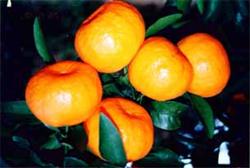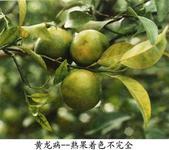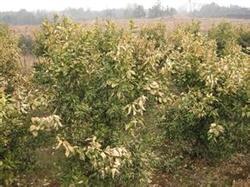Management and cultivation techniques of citrus in late stage

At present, it is a key period for citrus fruit expansion, endoplasmic enrichment and sugar increase. Do a good job of its late management scientifically, so as to greatly improve the quality and output, so as to enhance the competitiveness of fruit and the income of fruit growers. Enhanced illumination is one of the basic conditions for light energy to convert light energy into chemical energy, namely carbohydrates, under the action of chlorophyll. Strong light, strong photosynthesis, high sugar content and high sweetness. For example, the peel of the fruit on the top of the tree is smooth, the color is bright, and the fruit is rich and sweet. On the contrary, it is the low-quality fruit with light sour taste. The annual sunshine hours of citrus growth and development is more than 1250-1400 hours, and the annual sunshine hours of Sichuan Basin is generally 1250 hours, which can basically meet the requirements of citrus sunshine hours. If there is continuous autumn rain from September to October, the light will be insufficient, which will greatly affect photosynthesis, reduce sweetness, lighten flavor, increase acidity and decrease quality. Increasing light can improve the quality and yield of citrus. 1. Moderate pruning. For the too gloomy citrus orchard, it can be pruned appropriately at present, and the overprosperous light-blocking branches, cross branches, hidden branches and drooping branches can be removed. Increasing the ventilation and light transmission of the tree can enhance the light intensity, improve the fruit endoplasm, and enhance the smoothness and color of the pericarp. 2. Laying reflective film. Reflective film is a kind of mulch film specially used to enhance light. The light in Sichuan Basin is about 100-300 hours less than that in citrus producing areas such as Guangdong, Guangxi and Jiangxi, so if there is continuous rain from September to October, the ground should be covered with silver reflective film to enhance the light intensity and hours, increase the sugar content of fruit and increase the weight of single fruit. Water control is generally prone to continuous autumn rain from September to October. This is extremely disadvantageous to improve the sugar content of the fruit. Water control should be carried out to keep the orchard soil dry properly, which is beneficial to the improvement of fruit quality. 1. Deep trench drainage. To achieve a row of ditch drainage, ditch width of 45 cm, ditch depth of 45 cm, during this period to keep the ditch free of weeds and mud, so that the drainage is unobstructed, there is no stagnant water, the groundwater level is lower than 40 cm, and the root system is breathing well. 2. Film laying for drainage. During the continuous rain from September to October, the drainage film can be laid on the side of the box and the ditch, especially the reflective film on the side of the box and the general film in the ditch, which is very beneficial to maintain moderate soil moisture and cultivate high-quality fruits. The plastic film should be recovered in time after the fruit is harvested for many years. Fertilization deficiency from July to August, especially in orchards with insufficient organic fertilizer, can be fertilized once as appropriate to make the leaves strong green photosynthesis and high fructose application of phosphate fertilizer. Surface fertilization: the application of biogas fertilizer or pig manure, especially rotten oil fertilizer, has a good effect on improving quality; foliar fertilization: the mixture of 0.1% ammonium molybdate and boric acid can be sprayed on the leaf for 1-2 times, which is of great benefit to the improvement of fruit quality. The insect-resistant fruit armyworm is harmed from September to October. It uses needle-like mouthparts to pierce the fruit to absorb liquid, and there are small holes outside the damage, which finally leads to fruit rot. The damage rate of fruits in hilly orchards with serious damage can reach 20-30%, resulting in a serious reduction in production. It is better to use pyrethroid pesticides such as "enemy killing" or "Suishuding" plus "new high lipid membrane increase", but the drug should not be used 20-30 days before harvest.
- Prev

Identification and Control of Citrus Huanglong Disease
1. The typical symptom of the diseased tree in the initial stage is the yellowing of leaves with 1-2 or more branches in the thick green crown. There are two types of symptoms in this yellowing branch, one is uniform yellowing of the whole leaf, and the other is a piece of yellow and green, which is called mottled type. The total of these two types of leaves.
- Next

What is the index of citrus frost injury?
Citrus freezing injury is a major disaster of citrus production in China, especially in the middle and lower reaches of the Yangtze River and the north. The large fluctuation of citrus yield is often directly related to the low temperature freezing injury during overwintering. The meteorological index of citrus frost injury can be divided into-5 according to the degree of frost injury.
Related
- Moge, come on! The staff of the peasant association in the producing area of cantaloupe were frightened when the crowd gathered.
- Causes and Solutions of low Fruit setting rate of Apple
- Symptoms and control measures of passion fruit virus disease
- Fruit growing lesson: how do apple orchards keep high yields?
- Can you build orchards in the mountains? What are the pros and cons?
- How to manage the coloring period of Crisson grape?
- This paper introduces the processing technology of two kinds of fig products.
- How much is a month for retired teachers in rural areas by 2020?
- How can strawberry planting increase sugar content? We should pay attention to management in many aspects.
- What are the cultivation techniques on how to improve the yield of golden fruit?

